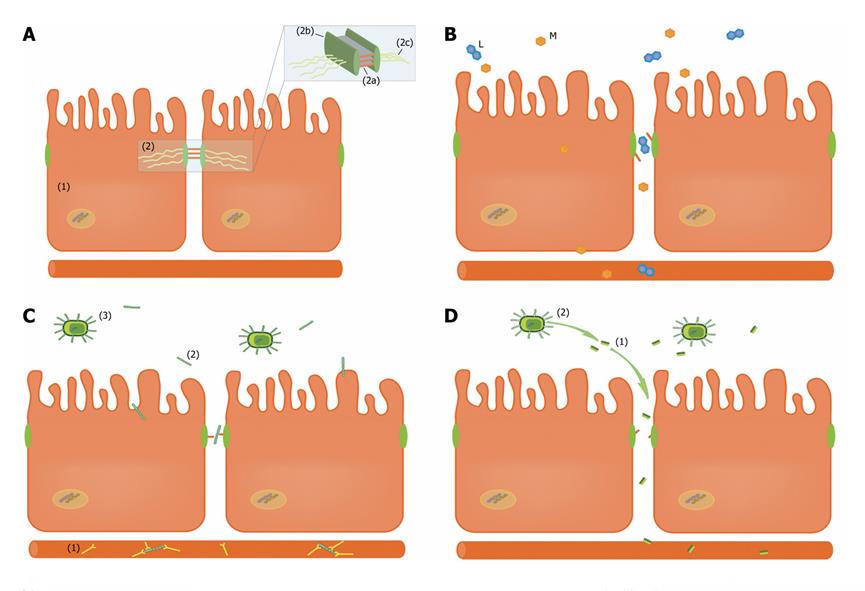Copyright
©2010 Baishideng.
World J Gastrointest Surg. Mar 27, 2010; 2(3): 61-69
Published online Mar 27, 2010. doi: 10.4240/wjgs.v2.i3.61
Published online Mar 27, 2010. doi: 10.4240/wjgs.v2.i3.61
Figure 1 Translocation of compounds from the gut lumen to the circulation via a defective intestinal barrier.
A: The intestinal epithelial barrier is composed of a lining of enterocytes (1) tightly connected by tight junctions (2) to prevent the translocation of intraluminal compounds to the circulation. Claudins (2a), important transmembrane tight junction proteins responsible for sealing the paracellular space, are tightly connected to intracellular protein ZO-1 (2b), which is anchored to the cell cytoskeleton (2c); B: Differential sugar absorption test: Lactulose (L), a disaccharide, is only able to traverse the paracellular pathway in case of compromised intestinal barrier function. Mannitol (M) is a monosaccharide which can cross the intestinal barrier both via the trans- and paracellular pathway, thereby serving as an internal control to correct for confounders as gastric emptying, mucosal perfusion and renal function; C: Endotoxin core antibody (EndoCAb) (1) is consumed when endotoxin (2), derived from intraluminal Gram-negative bacteria (3), translocates from the intestinal lumen to the circulation via the defective intestinal barrier; D: D-Lactate (1) is a fermenting product from intestinal bacteria (2). In case of barrier function loss, D-Lactate can be detected in plasma.
- Citation: Grootjans J, Thuijls G, Verdam F, Derikx JP, Lenaerts K, Buurman WA. Non-invasive assessment of barrier integrity and function of the human gut. World J Gastrointest Surg 2010; 2(3): 61-69
- URL: https://www.wjgnet.com/1948-9366/full/v2/i3/61.htm
- DOI: https://dx.doi.org/10.4240/wjgs.v2.i3.61









